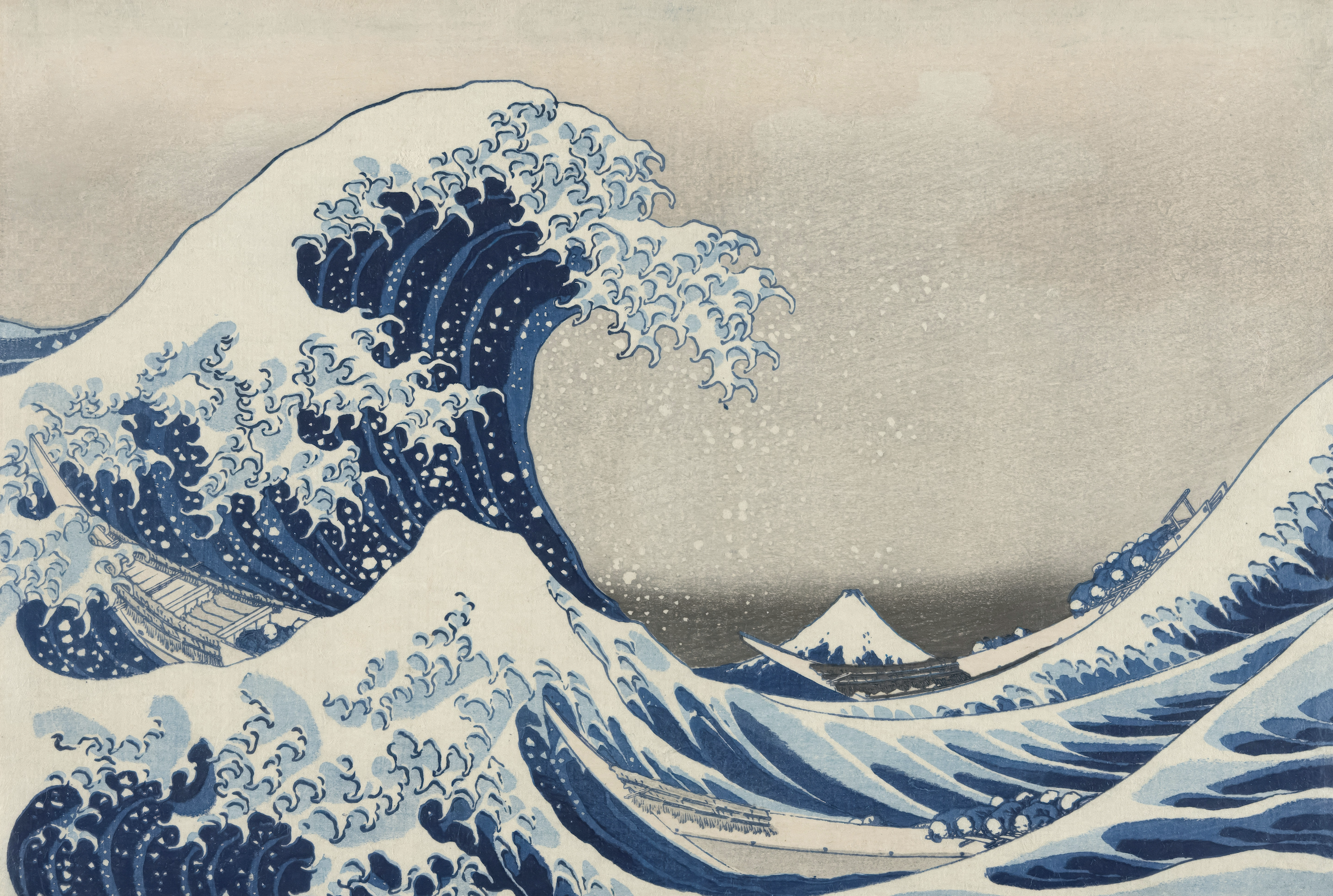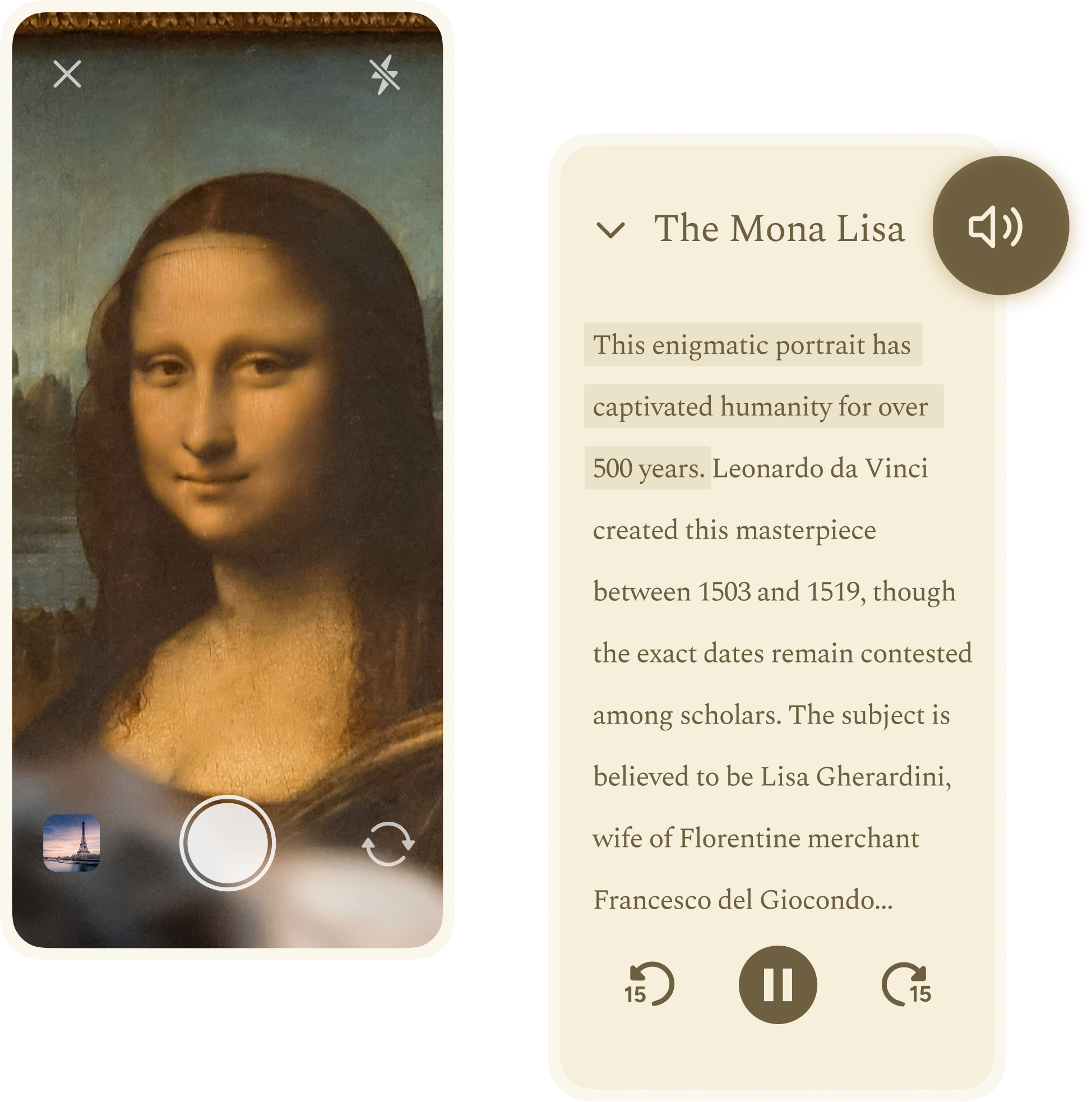The Great Wave off Kanagawa
Explorting the meaning behind Japan's most famous artwork

Few works of art have achieved the global recognition and cultural staying power of "The Great Wave off Kanagawa." This iconic Japanese woodblock print, depicting an enormous wave threatening boats near the Japanese prefecture of Kanagawa, has adorned everything from coffee mugs to college dorm walls, becoming a visual shorthand for Japanese art and culture. But what makes this image so captivating, and what deeper meanings lie beneath its seemingly simple composition?
The Artist Behind the Wave
To understand the meaning of the Great Wave, we must first know something about its creator. Katsushika Hokusai (1760-1849) was already in his seventies when he created this masterpiece around 1831. Far from being a young revolutionary, Hokusai was an established master who had spent decades perfecting his craft.
The Great Wave was part of Hokusai's series "Thirty-Six Views of Mount Fuji," which featured Japan's sacred mountain from different perspectives and in various seasons. This series came during what many consider Hokusai's peak creative period, when he had developed a distinctive style that merged traditional Japanese techniques with influences from Western art that had begun filtering into Japan despite its isolated status.
What's particularly remarkable is that Hokusai created his most enduring work late in life. He once wrote that nothing he created before the age of 70 was worthy of notice. He believed that by the age of 110, he would have reached the point where "every dot and every stroke will be alive." While he didn't quite make it to that ambitious age, the vitality in each line of the Great Wave suggests he was well on his way to achieving this artistic ideal.
Composition and Technical Innovation
At first glance, the Great Wave appears deceptively simple: a large wave, some boats, a mountain in the background. Yet its composition reveals Hokusai's mastery.
The wave itself dominates the scene, its claw-like peak threatening to crash down on the vulnerable boats below. The curve of the wave creates a hollow space in the composition, framing distant Mount Fuji, which appears small yet immovable in the background. This creates a striking visual tension between the temporary might of the wave and the eternal presence of the mountain.
The print demonstrates remarkable technical innovations for its time. Hokusai used a recently imported Prussian blue pigment, rather than the traditional indigo, giving the print its distinctive deep blue coloration. This synthetic pigment was more resistant to fading from sunlight than traditional Japanese colors, which may partly explain why the image has remained so vibrant in the modern imagination.
The composition also shows Western influence in its use of linear perspective—creating a sense of deep space that wasn't typical in traditional Japanese art. Hokusai combined this with traditional Japanese elements like the stylized wave patterns and flat areas of color, creating a hybrid aesthetic that would influence generations of artists in both Japan and abroad.
Symbolic Interpretations
Beyond its compositional brilliance, the Great Wave carries multiple layers of meaning that resonate with viewers across cultures and time periods.
Humanity and Nature
Perhaps the most immediate interpretation focuses on the relationship between humans and nature. The tiny fishing boats known as oshiokuri-bune caught beneath the towering wave highlight human vulnerability in the face of natural forces. The fishermen are shown bent over, working in harmony with the sea rather than fighting it directly, suggesting a Japanese worldview that acknowledges the necessity of working with rather than against natural powers.
This theme would have resonated with Hokusai's original audience, as Japan is an island nation highly susceptible to tsunamis and other natural disasters. The image captures both the beauty and the terror of the ocean—what philosophers call the sublime, or the awesome power of nature that inspires both wonder and fear.
Mount Fuji as Spiritual Anchor
Look closely at the composition, and you'll notice that despite the drama of the wave, Hokusai carefully positioned Mount Fuji in the background. This sacred mountain, central to Shinto spiritual beliefs, appears stable and eternal despite the chaos in the foreground.
This juxtaposition can be interpreted as a commentary on the transient versus the permanent. The wave, despite its momentary power, will inevitably recede, while Mount Fuji endures. This reflects Buddhist concepts of impermanence, or mujō, that were deeply embedded in Japanese culture. The boats caught in this moment of crisis will either survive or perish, but the eternal cycle of nature continues regardless.
Japan's Relationship with the Outside World
Some scholars have suggested that the Great Wave holds political meaning as well. Created during Japan's self-imposed isolation under the Tokugawa shogunate, also known as the sakoku period, the image can be seen as a metaphor for Japan's complicated relationship with the outside world.
The wave might represent foreign influences threatening to overwhelm Japanese tradition, symbolized by Mount Fuji. Alternatively, it could represent Japan itself: a powerful force in its own right, distinct from the Western powers that were increasingly present in Asian waters during this period.
This interpretation gained particular resonance after Commodore Perry's "black ships" forced Japan to open to Western trade in 1853, just a few years after Hokusai's death. The image seemed prophetic of the massive changes that would transform Japanese society in the following decades.
Artistic Influence and Cultural Legacy
The Great Wave's influence extends far beyond Japan's shores. When Hokusai's prints began circulating in Europe in the mid-19th century, they sparked a revolution in Western art known as Japonisme.
Impressionist and Post-Impressionist painters like Claude Monet, Vincent van Gogh, and James McNeill Whistler were profoundly influenced by Japanese woodblock prints, particularly Hokusai's work. The flattened perspective, decorative patterns, and asymmetrical compositions found in The Great Wave inspired Western artists to break from traditional European artistic conventions.
Beyond the art world, the image has permeated popular culture in countless ways. It appears on products from t-shirts to tattoos, and has been reinterpreted and parodied in advertisements, political cartoons, and even emoji form 🌊. The wave has become a globally recognized symbol, able to be adapted for commentary on everything from climate change to economic crises.
In 2023, the image gained additional recognition when UNESCO added "Japanese techniques of water-based woodblock printing" to its Representative List of the Intangible Cultural Heritage of Humanity, acknowledging the artistic tradition that produced Hokusai's masterpiece.
Scientific Accuracy
What's particularly fascinating about the Great Wave is how it combines artistic expression with careful observation of natural phenomena. Modern oceanographers have noted that Hokusai's depiction shows a type of wave known as a rogue wave, or extreme storm wave, with remarkable accuracy.
The wave shows characteristics typical of these dangerous ocean phenomena: the steep, nearly vertical face, the breaking crest with "claws" of spray, and the hollow space beneath. Hokusai captured these features decades before they were formally studied by marine scientists, demonstrating his keen observational skills.
This scientific accuracy enhances rather than diminishes the artistic impact of the image. Hokusai wasn't simply creating a fantastical scene but capturing a genuine natural phenomenon that threatened Japanese fishermen, lending the image authenticity alongside its dramatic composition.
The Great Wave in Context
Understanding the Great Wave requires placing it in its historical context. During the Edo period (1603 - 1868) when Hokusai worked, woodblock prints were a form of mass media rather than elite art. Known as ukiyo-e or "pictures of the floating world," these prints were affordable to ordinary Japanese citizens and often depicted scenes from everyday life, entertainment districts, beautiful landscapes, and famous actors or courtesans.
"The Thirty-Six Views of Mount Fuji" series was created during a time when domestic tourism was becoming increasingly popular in Japan. Travel guides and landscape prints catered to this interest, allowing people to experience famous sites vicariously if they couldn't visit in person. Hokusai's series can be seen as a sophisticated variant of this genre, transforming familiar views through his unique artistic vision.
What's remarkable is how a work created for such commercial purposes transcended its origins to become one of the world's most recognized art images. The original prints would have sold for roughly the price of a bowl of noodles; today, rare early impressions of the Great Wave can command millions of dollars at auction.
Experiencing the Original
Despite its ubiquity in reproductions, experiencing an original Great Wave print reveals details lost in most copies. The woodblock printing technique created a texture and depth that's difficult to capture in modern reproductions.
Each print in the original series was created through a complex process involving multiple wooden blocks — one for each color — with precise alignment required for each impression. The prints weren't considered unique art objects as they are today. Multiple impressions were made from the same blocks, with subtle variations between them.
Original impressions of the Great Wave can be found in major museums worldwide, including the Metropolitan Museum of Art in New York, the British Museum in London, and the National Museum of Tokyo. The colors are often more subtle than in reproductions, with delicate gradations of blue and the precise white of the untouched paper forming the foam of the waves and the snow on Mount Fuji.
Want to discover the deeper meanings behind artworks like The Great Wave when you visit museums? Download Guide for an on-demand audio tour experience that brings art to life.
